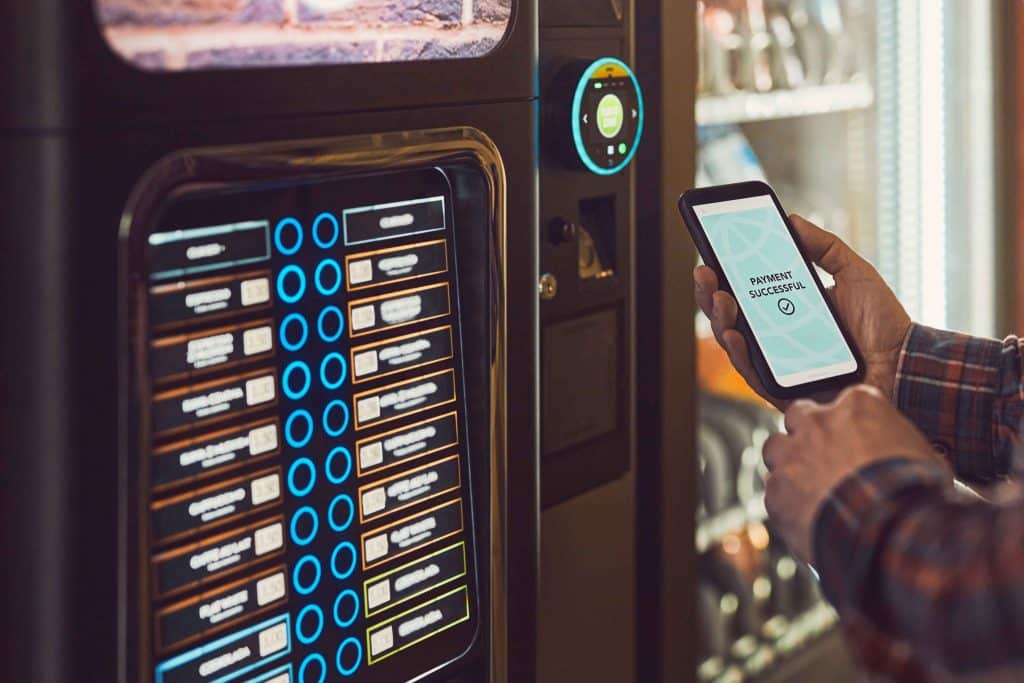In the dynamic sphere of food service, operational efficiency is essential, and the integration of technological systems such as a commissary ordering system can offer significant advantages. This system, designed to simplify order placements and optimize inventory management, can transform your kitchen operations.
In addition to these benefits, it also provides a platform for custom pricing models, enabling cost savings and budget control. Equipped with advanced reporting features and analytics, it brings a new level of transparency and control to your kitchen operations. Stay with us as we explore the full potential of this transformative technology.
Get Free Consultation
Key Takeaways
- Implementing a commissary ordering system can enhance kitchen efficiency and streamline operations.
- Custom pricing in commissary systems offers cost savings and tailored solutions for better budget control.
- Advanced reporting features in commissary systems automate order management and regulatory compliance.
- Technological advancements like AI and IoT are set to revolutionize commissary food service systems and operations.
Introduction to Commissary Ordering Systems
Commissary ordering systems are integral components in the food service industry, designed to streamline and optimize operations. Understanding their functionality and inherent benefits is essential for any kitchen seeking to enhance its efficiency.
In the following sections, we will explore the definition of commissary ordering systems and discuss the advantages associated with their implementation.
Defining Commissary Ordering
Often misunderstood, a commissary ordering system refers to a specialized software solution designed for food service establishments to manage and streamline their ordering processes. This significant system is a vital tool in commissary operations, aiding in the functioning of kitchen and food commissaries.
Simplifying what is a commissary kitchen, it is a licensed commercial space where food service providers prepare and store their food. The commissary food service system is integral in maintaining smooth operations and ensuring orders are executed flawlessly.
Please be aware that commissary food service system examples vary widely, as they are tailored to meet the unique needs of each establishment. Indeed, understanding the essence of a commissary ordering system is the first step in maximizing your kitchen’s potential.
Benefits of Implementing Commissary Systems
Having comprehended the fundamental role of a commissary ordering system, it’s important to explore the numerous benefits these systems bring to kitchen operations. These systems can greatly enhance efficiency, streamline workflow, and simplify inventory management.
Additionally, they offer customization options to suit unique operational needs, thereby maximizing the kitchen’s potential.
Here is a brief overview of the advantages:
| Benefits | Description | Impact |
| Enhanced Efficiency | Accelerates order placements and processing | Time-saving |
| Streamlined Workflow | Simplifies operations with systematic order management | Higher productivity |
| Inventory Management | Provides real-time inventory tracking | Reduced waste and cost-saving |
How Commissary Ordering Systems Optimize Kitchen Operations
Commissary ordering systems have the potential to optimize kitchen operations through various mechanisms. By streamlining workflows, these systems can simplify order placements and processing, leading to substantial time savings.
Additionally, they offer improved inventory management and customizable features that enhance accuracy, efficiency, and flexibility in kitchen operations.

Streamlining Workflow
In the dynamic environment of a kitchen, streamlining workflow becomes critically important, and commissary ordering systems offer a strategic solution to simplify order placements and processing. These systems are designed to integrate seamlessly into the kitchen’s operations, providing a fluid, automated process that reduces time spent on manual tasks.
By centralizing orders into a single platform, it eliminates the need for multiple spreadsheets or order forms, hence decreasing chances of errors. Additionally, real-time updates allow for swift adjustments, enhancing productivity.
With systematized processes, kitchens can focus on their core function- creating exceptional culinary experiences. By optimizing workflow, commissary ordering systems drive efficiency, and ultimately, the competitiveness of the kitchen in a bustling food service industry.
Inventory Management
Beyond the optimization of workflows, these ordering systems also play a pivotal role in enhancing inventory management within the kitchen operations. The system provides an accurate, real-time picture of your inventory, reducing waste and eliminating the chances of running out of key ingredients. It streamlines the process of tracking, managing, and reordering supplies, making certain that your kitchen is always adequately stocked.
| Features | Benefits | Impact |
| Real-time Inventory Updates | Reduces errors in stock counts | Enhances operational efficiency |
| Automated Reordering | Prevents running out of supplies | Ensures smooth kitchen operations |
| Waste Reduction | Helps identify and manage excess stock | Reduces costs and promotes sustainability |
Therefore, a commissary ordering system can take your inventory management to the next level and improve your kitchen operations.
Customization and Flexibility
Another significant advantage of a commissary ordering system lies in its customization and flexibility, adeptly catering to the unique needs and demands of each kitchen operation. This adaptability allows for a more streamlined workflow, as the system can be tailored to meet specific business objectives and operational demands.
Whether you need to manage multiple vendors, handle complex pricing structures, or oversee a wide range of product categories, a commissary ordering system can be configured to handle these tasks efficiently.
Furthermore, the flexibility of these systems allows for easy integration with existing hardware and software, ensuring minimal disruption to operations. Essentially, these adaptable systems enable kitchens to optimize their operations and maximize their potential.
Commissary Food Service System: A Closer Look at Custom Pricing
As we further explore the functionalities of commissary food service systems, it is pertinent to examine custom pricing. This pricing model, unique to each kitchen’s needs, is a significant component of these systems. We will assess its mechanics, the advantages it offers, and the steps needed for successful integration into your operations.
Understanding Custom Pricing Models
Typically, custom pricing models in a commissary ordering system allow for dynamic and flexible pricing strategies, tailored to meet the specific needs and demands of different kitchen operations. These models focus on providing value and cost efficiency, with pricing structures that can be adjusted based on various factors.
Here are three key elements to take into account:
- Variable Cost Pricing: Pricing can be adjusted based on fluctuating costs of goods, seasonal availability, or market trends.
- Volume-Based Pricing: Cost per unit may decrease as the volume of an order increases, incentivizing larger purchases.
- Tiered Pricing: Price adjusts based on predefined thresholds or tiers, offering different pricing options for different levels of service or product quantity. Understanding these models helps maximize your kitchen’s potential.
Benefits of Custom Pricing
Having a good grasp of these custom pricing models paves the way for recognizing the numerous benefits that they can bring to your kitchen operations. Custom pricing provides cost savings by allowing you to pay only for what you use, leading to improved budget control. It also enables tailored solutions, ensuring that your kitchen’s specific needs are met.
Here’s a brief overview of the benefits of custom pricing:
| Benefit | Description | Impact |
| Cost Savings | Pay only for what you use | Reduces operational costs |
| Budget Control | Easier financial management | Enhances economic stability |
| Tailored Solutions | Adapts to kitchen’s needs | Increases efficiency |
Custom pricing offers flexibility, promoting an efficient and cost-effective kitchen operation.

Implementing Custom Pricing in Your Operations
To harness the full benefits of custom pricing in your kitchen operations, correct implementation within your commissary ordering system is essential. Custom pricing holds the potential to streamline your budgeting process, tailor your costs to your specific needs, and enhance overall financial management.
- First, define your pricing parameters according to your operational needs and financial objectives. This involves considering factors like ingredient costs, labor, and overheads.
- Second, integrate these parameters into the commissary ordering system, ensuring they align with other operational elements like inventory management.
- Finally, routinely review and adjust your custom pricing strategies as necessary to reflect changes in market prices or operational costs.
Advanced Reporting Features in Commissary Ordering Systems
Advanced reporting features in commissary ordering systems offer a sophisticated toolset for streamlining kitchen operations. These features provide thorough order management, specialized category-wise and regulatory reporting, and automation capabilities to enhance efficiency. Let’s now discuss these points in detail to understand how they contribute to maximizing kitchen potential.
Comprehensive Order Management
Commissary ordering systems offer robust tools and features designed to meticulously track orders from initiation to delivery, providing a thorough solution for order management. These systems guarantee precision in every step of the order process, contributing to a more efficient and productive kitchen environment.
- Real-time tracking: The system allows for real-time monitoring of order status, providing instant updates and facilitating timely deliveries.
- Order history: It maintains an extensive record of past orders, enabling trend analysis and better decision-making for future orders.
- Order Adjustment: It permits users to make necessary changes in the orders even after placement, ensuring flexibility and customer satisfaction.
The advanced reporting features help in streamlining operations, reducing errors, and ultimately, maximizing the kitchen’s potential.
Category-wise and FDA vs. USDA Reporting
In addition to thorough order management, commissary ordering systems can provide detailed category-wise and FDA vs. USDA reporting, which further enhances the efficiency of kitchen operations. These robust reporting features allow for precise monitoring and control of various categories of food products, thereby ensuring regulatory compliance and optimized supply chain management.
By differentiating between FDA and USDA regulated products, the system promotes adherence to the specific reporting requirements of both these governing bodies. This not only helps kitchens avoid potential legal and safety issues, but also aids in maintaining the quality and integrity of food supplies.
Therefore, the advanced reporting capabilities of commissary ordering systems are an invaluable tool in maximizing the potential of your kitchen operations.
Automating Reports for Efficiency
The process of report generation can be greatly streamlined through the automation features inherent in commissary ordering systems. These systems are equipped with advanced reporting capabilities that can automate a variety of processes, improving efficiency and accuracy.
- Automatic Generation of Reports: The system can automatically generate reports based on specified parameters, eliminating the need for manual input and reducing the chances of error.
- Instant Report Access: With automation, reports are readily available, facilitating quick decision-making and efficient operations.
- Trend Analysis: Automated systems can track and analyze patterns over time, providing valuable insights that can be used to optimize kitchen operations. Automating reports can significantly enhance the efficiency of your kitchen operations.
Future Trends in Commissary Food Service Systems
As we examine the future landscape of commissary food service systems, it’s essential to contemplate the influence of emerging technologies. Innovations like artificial intelligence and Internet of Things (IoT) promise significant advancements in this sector. Concurrently, changes within the food service industry itself will also reshape commissary operations, as evidenced by various success stories.
Technological Advancements
Predictably, the rise of technology such as Artificial Intelligence (AI) and the Internet of Things (IoT) is set to revolutionize the commissary food service industry. These technological advancements promise to bring unprecedented efficiencies and insights to food service operations.
- AI and Machine Learning: Advanced analytics, predictive modeling, and automation of routine tasks will enhance decision making and operational efficiency.
- IoT and Smart Devices: Connected kitchen appliances and sensors will offer real-time data to optimize inventory management, food safety, and energy consumption.
- Blockchain Technology: This will guarantee traceability and transparency in the food supply chain, improving food safety and reducing waste.

These innovations are poised to redefine the commissary landscape, driving productivity and profitability while guaranteeing quality and compliance.
Evolving Commissary Operations
Exploring the future of commissary operations will involve embracing new trends and changes in the food service industry. Sustainability and ethical sourcing are expected to exert significant influence, with kitchens looking to reduce waste and source locally.
Digitization will also continue, as mobile ordering, cloud-based systems, and predictive analytics become standard. As dietary preferences evolve, so too will commissary operations, with an increased focus on dietary-specific and allergen-free meals. Kitchens will also need to be prepared for increased scrutiny, as consumers demand greater transparency around ingredients and food safety.
Therefore, the future of commissary operations will be characterized by technological integration, sustainability efforts, and a customer-focused approach.
Conclusion
The integration of commissary ordering systems revolutionizes kitchen operations, offering optimized inventory management and order placements. Custom pricing models within these systems promise cost savings and budget control. Advanced reporting features provide thorough order management and automated reports, enhancing efficiency.
Embracing technological advancements and operational evolutions, future trends in these systems promise continued enhancement. Undeniably, the commissary food service system serves as a cornerstone in maximizing a kitchen’s potential.
Frequently Asked Questions
How Secure Is the Data Stored in Commissary Ordering Systems and What Measures Are Taken to Protect It?
Commissary ordering systems prioritize data security, employing robust encryption protocols and access controls. Regular security audits and updates are conducted to guarantee protection against potential cyber threats, safeguarding your kitchen’s sensitive information.
What Kind of Training or Assistance Is Provided to Help Kitchen Staff Become Familiar With the Commissary Ordering System?
We provide extensive training and ongoing support for staff to master our commissary ordering system. This includes hands-on instruction, user-friendly guides, and responsive customer assistance to guarantee seamless integration and usage in your kitchen operations.
How Does the Commissary Ordering System Integrate With Other Software or Tools Commonly Used in the Food Service Industry?
Our commissary ordering system is highly compatible and easily integrates with commonly used food service software, enhancing operational efficiency by enabling seamless data exchange and coordinated functionalities between different applications.
Are There Any Limitations or Challenges That Kitchens Might Face When Implementing a Commissary Ordering System?
Implementing a commissary ordering system may present challenges like initial setup complexity, staff training needs, and integration with existing software. However, these are outweighed by long-term efficiency and operational improvements in the kitchen.
Can the Commissary Ordering System Accommodate Special Dietary Requirements or Restrictions in Its Order Processing?
Yes, our commissary ordering system can accommodate special dietary requirements. It allows customization of orders to cater to specific dietary restrictions, enhancing flexibility and efficiency in kitchen operations.
